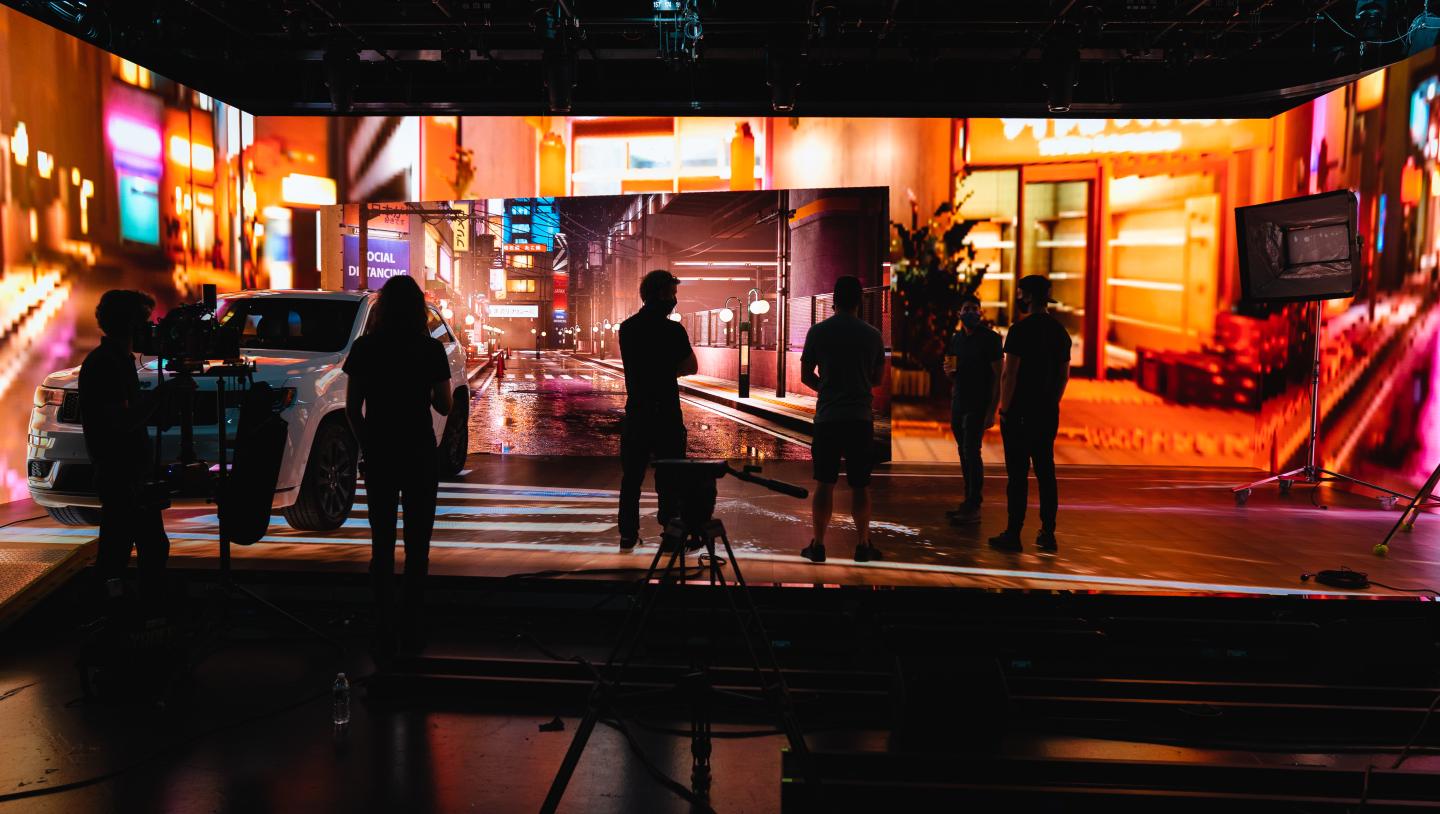Why Content Optimisation Can Make or Break Your Virtual Production
Virtual Production

Before a virtual environment makes it onto an LED wall, one of the final steps to take is to optimise it in Unreal Engine. Each piece of content displayed on an LED wall is carefully scrutinised and curated by a team of expert designers, tech artists, and developers to ensure it can run fast, efficiently, and still leave the audience wondering: Is this real or virtual?
The importance of content optimisation is compounded by how ubiquitous it is to not only the 3D pipeline but to the 2.5 and 2D pipelines as well. This blog will dive into the considerations made and hurdles surmounted to improve your content no matter the output.
Performance Efficiency
Smooth Playback
High-resolution or complex content can cause lag or dropped frames if the content is not optimised for the specific hardware of the LED volume. Ensuring your content is optimised for the system’s capability guarantees smooth and consistent playback, which is essential for a seamless production process.
Think of it like painting. The more complicated details you have in the picture you’re trying to make, the longer it takes you to paint it. The more complicated your content, the longer it takes for the computer to process it. If your hardware is not equipped to handle the level of complexity your content needs, it can cause stress on the computer, causing it to run slower.
In addition, for content to appear natural on an LED volume, it must be optimised for parallax and depth. This ensures that as the camera moves, the perspective of the virtual background shifts correctly, maintaining the illusion of depth and realism. If you move a scene with a nice parallax in a frame-dropping environment, it wouldn’t have the same effect.
RenderStream
One of the most important aspects of content optimisation is real-time synchronisation between the physical and virtual environments. This synchronisation allows for continuous updating of the virtual scene based on real-world inputs and ensures that virtual content reacts, adjusts, and reflects physical changes in real-time. Disguise offers an ecosystem for pixel-perfect rendering called RenderStream, which is specifically designed to scale up rendering power as needed on the most demanding productions. Using a modular hardware architecture, you can redirect rendering power to individual objects, frustums, or even grouped items.
Flexible for any kind of shot, including Unreal Engine, Unity, Notch, and TouchDesigner, RenderStream’s accuracy, efficiency, scalability, and workflow make it the perfect tool when optimising your content.
Visual Fidelity
Resolution Mapping
LED volumes are built with different pixel pitches and sizes, which define their effective resolution. To ensure content looks its best, it must be optimised to match the resolution created by the volume’s specific setup. If the resolution of the content is too low, it can appear pixelated. If the resolution of the content is too high, it can strain the system and cause playback issues. In order to ensure the content has a crisp and clear look on the LED walls, proper optimisation is vital.
Seamless Integration
A Balancing Act
Optimised content is a series of compromises for better scene health and speed. When planning for LED volume integration, every design choice—like texture resolution, lighting complexity, and particle density—affects both the system’s responsiveness and the realism of the scene. There’s a constant balancing act to keep the integrity of the scene intact while minimizing heavy assets that can strain processing power. The goal is to refine these elements so the visuals deliver on quality without compromising frame rate or introducing latency. This requires collaboration between creative and technical teams, ensuring that visual depth and detail are selectively applied only where it truly enhances the story, so the scene runs smoothly and looks visually compelling on set.
DMX Mapping
Combining practical light fixtures with LED volume based lighting is common in virtual production shoots. The challenge is to synchronise light fixtures to content that is played back on the wall. This can be easily achieved with timeline sequencing in Disguise, where you can have control over light fixture parameters via DMX protocol. Disguise can then synchronise and fully control both the content as well as the lights.
Streamlined Production
With content tailored for the LED volume, the production process is smoother, with fewer technical hiccups. This means less downtime on set and a more efficient use of resources.
Be thoughtful, and optimise your content often. The more efficient you can make things during the creation process, the easier it is to reduce file sizes and transfer projects quicker, allowing other teammates to work in a more stable environment and create a standard for others to follow.
Asset Management
Organising and streamlining your digital assets so they are easily accessible and optimised for quick implementation during the production process is key. Smart choices at any level can have ripple effects on many other systems. Something as simple as a pure gray texture might be used in 20 other spots. Understanding where each asset is and how it affects others will allow for a more streamlined approach.
How to Optimise Your Content for Virtual Production
different environments, lighting, and textures differ in virtual spaces compared to practical spaces. One of the keys to proper content optimisation is early collaboration between the creative and technical teams to avoid things falling through the cracks.
Our services teams work hand in hand from day one, ensuring an extensive pre-visualisation and tech-visualisation process with our Virtual Art Department. Connect with our team of creative and technical experts who are all under one roof today.
By optimising content for an LED volume, you’re ensuring that the technical and creative aspects of your production work in harmony, leading to a visually stunning and efficiently produced final product.